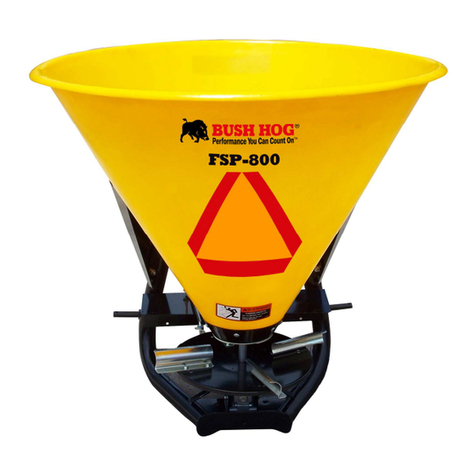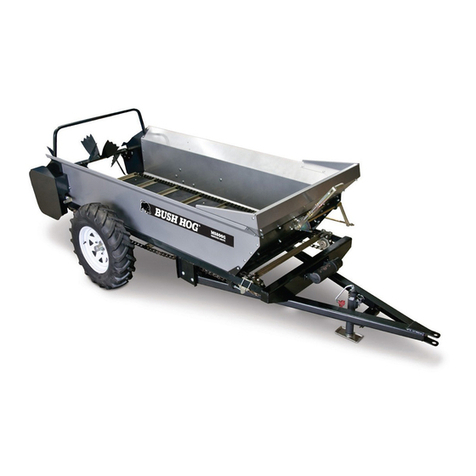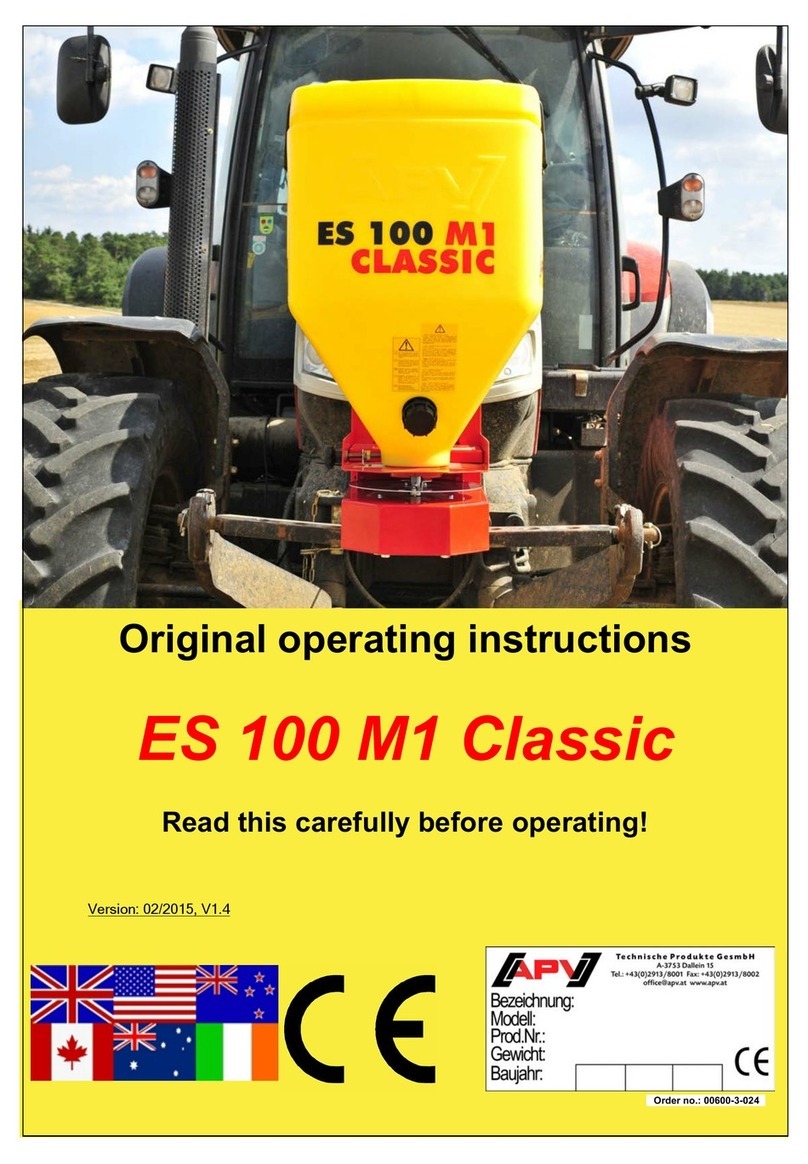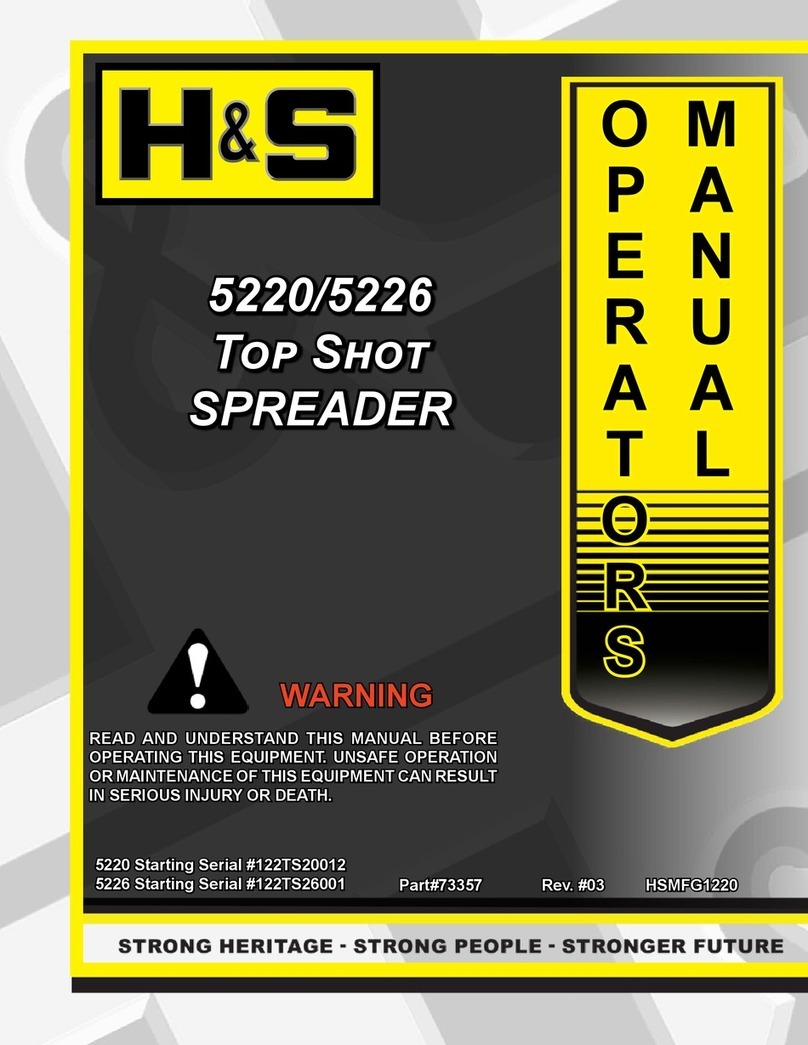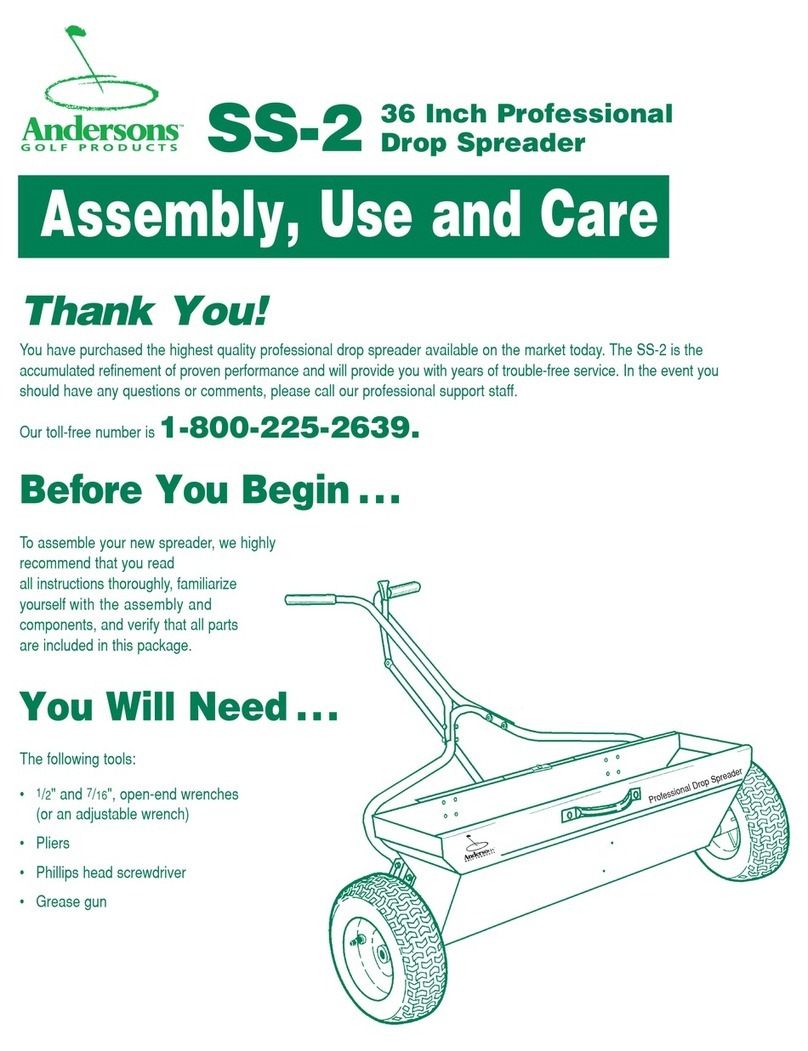
Safety
Safety
9
MS1300P
Manure Spreader
3.4 Safety Rules
CAUTION!
Hearing loss hazard. Prolonged
exposure to loud noise may cause
permanent hearing loss. Use suitable
protection while operating the
machine.
W016
• Follow ALL safety and operating
instructions in this manual. The
most important safety device on this
equipment is a SAFE operator.
• Operators of this machine must be responsible, physically
able people who are familiar with machinery and trained in
the operation of this equipment.
• Learn the meaning of all the safety signs (decals) that
are on the machine. For definitions, see Safety Sign
Explanations on page 12.
• Review safety related items annually with all personnel who
will be operating the machine or performing maintenance.
• Do not expect a person to operate the manure spreader
who has not read all the instructions and safety information
in this manual. An untrained operator is not qualified and
exposes themselves and bystanders to possible serious
injury or death.
• Never consume alcohol or drugs prior to or while using
this equipment. Alertness or coordination can be affected.
Consult your doctor about using this machine while taking
prescription medications.
• Wear appropriate PPE when using or servicing this
machine. This includes, but is not limited to:
-A hard hat
-Heavy gloves
-Hearing protection
-Respirator or filter mask
-Protective shoes with slip resistant soles
-Protective glasses, goggles, or face shield
• Wear hearing protection on a full-time basis if the noise in
the operator's position exceeds 80 dB. Noise over 85 dB
on a long-term basis can cause severe hearing loss. Noise
over 90 dB adjacent to the operator over a long-term basis
may cause permanent, total hearing loss.
• Keep a first-aid kit available for use, should
the need arise, and know how to use it.
• Keep a fire extinguisher available for use, should
the need arise, and know how to use it.
• Do not use a tractor unless it is equipped with a roll over
protective structure (ROPS). Always wear the seat belt
when operating a tractor. Serious injury or even death could
result from falling off the tractor in the event of a rollover
where the operator could be pinned.
• Do not allow long hair, loose fitting clothing, or jewelry near
the equipment.
• Know how to stop the equipment quickly in the event of an
emergency. For instructions, see Stopping in an Emergency
on page 23.
• Only operate the machine in daylight or good artificial light.
• Do not risk injury or death by ignoring good safety
practices.
• For more information, see the following sections:
-Operating Safety on page 22.
-Maintenance Safety on page 28.
3.5 Equipment Safety Guidelines
• The manure spreader is not intended for use or transport
on public roadways. For more information, see Transporting
on page 26.
• Never operate the machine with any shield removed. Keep
all shields in place. If shield removal is required for service
or maintenance, replace the shield prior to using the
manure spreader.
• Replace any safety or instruction signs (decals) that are not
readable or missing.
• Do not modify the equipment in any way. Unauthorized
modification may result in serious injury or death, and may
impair the function and life of the equipment. Unapproved
modifications void the warranty.
• Make sure that the machine is properly stationed, adjusted,
and in good operating condition.
• Never exceed the limits of a piece of machinery. If the
machine's ability to do a job or to do it safely is in question
– DO NOT TRY IT.






